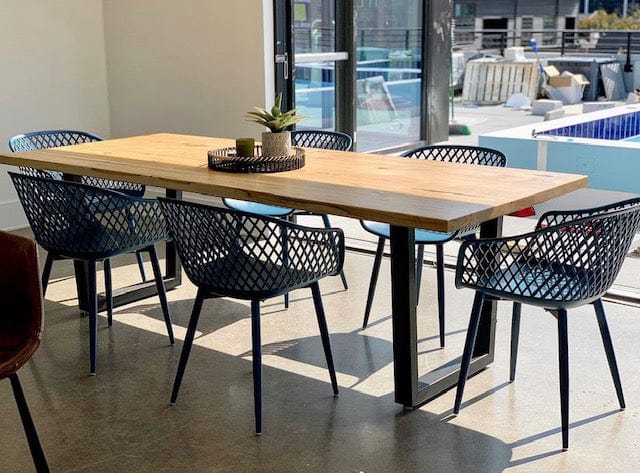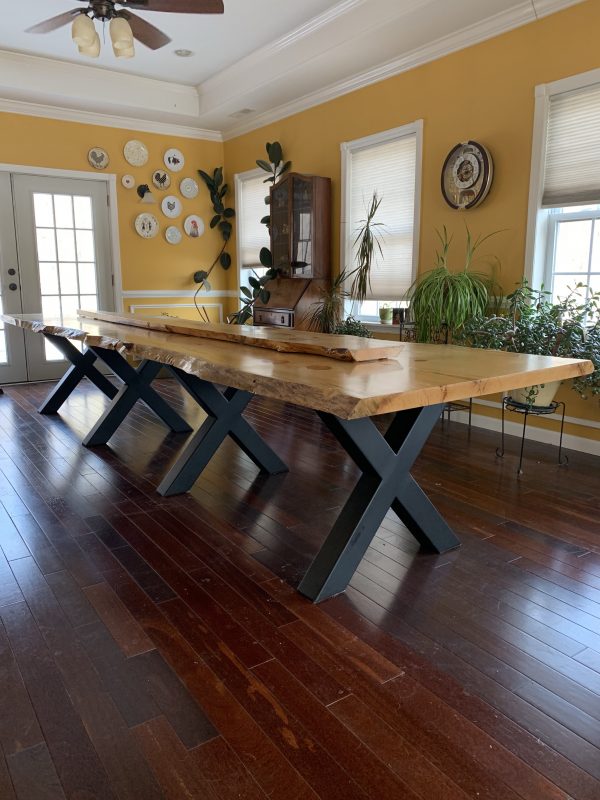The Best Materials for Durable and Elegant Dining Room Table Legs
Wiki Article
From Standard to Modern: Find the Ideal Dining Area Table Legs for Your Style
The choice of dining-room table legs plays a crucial function in defining the general character of your area, bridging the void between typical workmanship and modern-day appearances. While timeless layouts such as cabriole and turned legs evoke a sense of classic class, contemporary designs like barrette and geometric options offer a chance for striking aesthetic rate of interest. Assessing the right balance in between these styles calls for a nuanced understanding of your existing decor and personal taste. As you consider these elements, the question continues to be: how can you effortlessly integrate these diverse leg styles to produce an unified dining experience?Recognizing Table Leg Styles
The selection of dining-room table leg styles can substantially affect both the aesthetic appeals and functionality of the area. Each leg style contributes special aesthetic aspects and sensible functions, catering to diverse layout choices and use needs. Recognizing these designs is critical for picking the ideal table that aligns with your overall indoor layout vision.As an example, tapered legs provide a clean, timeless appearance that can improve a space's elegance, while stand bases provide stability and make best use of legroom, making them excellent for smaller sized areas. Barrette legs, a trademark of mid-century modern-day style, introduce an industrial style, enabling a ventilated, open feeling. Similarly, trestle legs stimulate rustic beauty, supplying robust assistance and a sense of eternity.
Moreover, the option of materials plays a substantial function. Wooden legs can bring heat and appearance, whereas steel choices typically convey a streamlined, modern vibe. Inevitably, comprehending table leg styles is necessary for producing a cohesive eating area that shows individual style while making sure practicality and comfort. By attentively thinking about these components, you can boost both the aesthetic and practical allure of your dining room.
Standard Table Leg Options
When picking dining-room table legs, conventional alternatives often symbolize ageless style and workmanship. These styles show an abundant heritage and a dedication to top quality, making them suitable for those who appreciate traditional visual appeals.Among the most legendary traditional leg designs is the cabriole leg, defined by its elegant curved form. This style often includes ornamental carvings and is most typically located in Queen Anne and Chippendale furnishings. One more preferred alternative is the turned leg, which boasts a collection of smooth, rounded forms that supply a classic look while maintaining stability.
Additionally, the straight leg, while simple, provides a unadorned and sturdy framework that can mix flawlessly with a selection of tabletop designs. For those drawn to ornate describing, claw-and-ball feet legs stimulate a feeling of majesty and can offer as a stunning centerpiece in any type of dining space.
Lastly, stand bases, although not purely legs, provide an alternative traditional alternative that permits enough legroom and can be perfectly sculpted. Each of these standard leg styles adds to the overall atmosphere of a dining area, weding function with visual appeal.

Modern Table Leg Designs
Modern table leg layouts provide a diverse series this content of styles that stress clean lines and cutting-edge products. These styles typically focus on performance while functioning as striking prime focus within an eating area. Minimal visual appeals prevail, with legs crafted from products such as metal, glass, and crafted wood, which contribute to a modern and airy feel.One preferred layout is the hairpin leg, defined by its slender, tapered framework that provides stability without overwhelming the tabletop (dining room table legs). This design is frequently located in mid-century modern furnishings and can easily complement different table forms. An additional trend is the usage of geometric forms, where legs might handle angular or unbalanced kinds, adding visual passion and a touch of artistry

Blending Styles for Unique Rooms
Commonly, home owners look for to produce distinct dining rooms that show their individual style by blending numerous style aspects. This strategy enables the consolidation of diverse looks, leading to a harmonious yet distinctive environment. For example, combining a rustic wooden table with sleek, modern-day steel legs can produce an eye-catching comparison that raises the room's overall appeal.Additionally, integrating vintage table legs with modern tabletops can stimulate a view sense of background while maintaining a modern-day perceptiveness. Such combinations not just showcase specific taste yet additionally encourage creative thinking, allowing home owners to curate an area that really feels both individual and welcoming.
Shade plays a crucial function in this mixing process; choosing table legs that complement or comparison with the existing color pattern can boost visual rate of interest. As an example, whitewashed legs can soften the boldness of a dark table surface area, creating a balanced visual.
Tips for Choosing the Right Legs
Choosing the right table legs is necessary for achieving both performance and visual appeal in your dining area. Begin by taking into consideration the total style of your space. Standard setups gain from legs that feature intricate carvings or transformed layouts, while modern spaces may require sleek, minimalist designs.Following, analyze the height and stability of the legs. dining room table legs. Standard table vary between 28 to 30 inches in elevation, so make certain the legs match this dimension for convenience. Additionally, robust materials, such as hardwood or steel, can boost security and long life
Evaluate the leg form as well-- options include straight, tapered, or stand designs. Straight legs offer a classic appearance, while conical legs can include a touch of style. Pedestal bases provide ample legroom and are optimal for smaller sized rooms.
Verdict
In recap, choosing the ideal eating area table legs calls for cautious consideration of both modern and typical styles. By harmonizing leg design, height, and product with the general design, a cohesive and welcoming ambience can be achieved.The selection of eating area table leg designs can significantly influence both the looks and capability of the space. Inevitably, comprehending table leg designs is vital for creating a cohesive eating area that shows personal style while making certain usefulness and convenience.One of the visit this page most iconic traditional leg designs is the cabriole leg, identified by its stylish bent shape. Straight legs supply a classic appearance, while conical legs can add a touch of beauty.In recap, selecting the excellent dining space table legs calls for careful factor to consider of both modern and conventional designs.
Report this wiki page